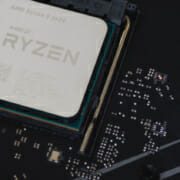How A Minimum Viable Product Helps You Identify Opportunities
Building a minimum viable product (MVP) is a smart move. Not only will it help you identify opportunities, but provide valuable insight into what your users truly want. And if you plan your MVP carefully, you’ll complete it successfully while keeping your development costs low.
1. The Minimum Viable Product Is A Powerful Tool In Your Arsenal
Every smart appreneur or enterprise takes advantage of the most effective tools available to them. Such a tool is the minimum viable product, which helps determine whether or not an app will be successful. Since an MVP is far cheaper and quicker to develop than a full-featured app, it’s a less risky option. The developer only focuses on the bare minimum features and tries to solve a problem that app users face.
But even with this reduced cost and risk, it’s vital to treat MVP development seriously. Don’t be self-indulgent with your ideas or implement trendy concepts that don’t align with what’s best for your business. An MVP is supposed to reveal whether users find your app appealing while you gather analytical data and feedback. Moreover, this MVP should diminish fears and concerns from investors and stakeholders about the prospects of your upcoming project.
2. Carefully Plan Your MVP To Reduce Development Costs
Before commencing with your minimum viable product, you’ll need to assess various factors. Firstly, understand what’s best for your business and what your long-term goals are for the app. Secondly, map out how app users will find your app and what pain points they may experience. Thirdly, decide on which features to prioritize based on the pain points and opportunities your target users present.
Use a prioritization matrix to help you determine which features to implement and which to leave out. Implement high impact and high urgency features while leaving out or revisiting low impact and low urgency features. By doing this, you’ll reduce development costs by building an MVP that strictly delivers the bare essentials.
3. Understand The Project Management Methodologies
From the most successful mobile app developers to elite business schools, the MVP has become indispensable. Undoubtedly, it can yield phenomenal results, provided it’s used for the right reasons and not as a panacea. That’s why it’s vital to understand project management methodologies, especially when running a lean startup enterprise. As an appreneur, mobile app developer, or even a business releasing its first app, you should have a handle on Agile practices.
Nowadays, many developers utilize the Agile methodology for delivering their products to app users quickly. But quick doesn’t mean bad, as Agile requires that each developer’s code is tested and passes code review before it’s added to the main branch. Furthermore, the development team will regularly engage the community and deliver updates continuously.
4. Your MVP Will Let You Know What App Users Want
Once you’ve released your minimum viable product, your users will start using it and give their feedback. Of course, you should be encouraging reviews and be engaging with users on as many channels as possible. You should also set up an analytics pipeline to effectively collect and analyze user data. All this information will let you know if you’ve created an MVP that’s worth scaling into a full-featured app.
And while developing an MVP may be less risky, this doesn’t mean that you should attempt it alone. For the best results, partner with an experienced development company that will help release your app within budget. Contact us today to learn how NS804 can assist you in creating MVPs that will appeal to new users.













Leave a Reply
Want to join the discussion?Feel free to contribute!